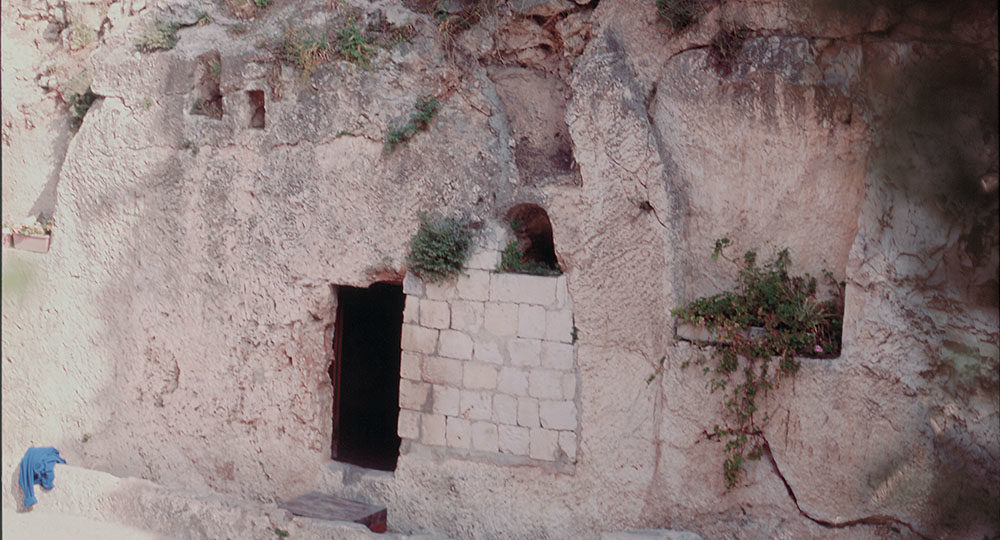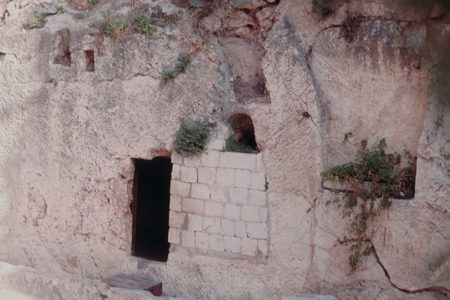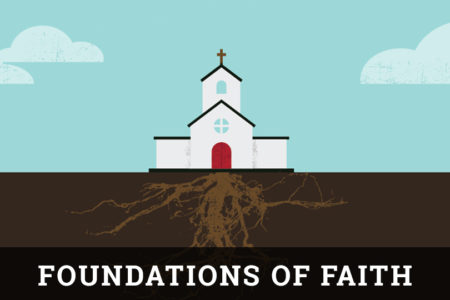The Servant’s Suffering
In 1 Corinthians 15:1–4, the Apostle Paul confidently asserts that “the gospel” he taught was that “Christ [the Messiah] died for our sins according to the scriptures; And that he was buried, and that he rose again the third day according to the scriptures.” For Paul, “the scriptures” were the Old Testament; therefore, the questions arise, Where does the Old Testament teach that the Messiah would die? Is not the Messiah the triumphant King who delivers Israel from its enemies? How then could He die? And if He did die, how could the Kingdom be brought in?
The answers to these questions have divided Jews and Christians for the past 2,000 years, and they are, for the most part, centered in the interpretation of Isaiah 52:13–53:12. For Christians, this passage applies directly to Jesus the Messiah and describes His substitutionary atonement for the sins of Israel and the world. Pre-Christian Judaism also interpreted this passage Messianically (Isaiah Targum, 52:13 and 53:10) but did not understand that the Messiah would die. For modern Judaism, the passage describes either the sufferings of the Jewish people, an Israelite prophet, or a pious Jewish sufferer. This article will demonstrate that the interpretation of Isaiah 53 not only applies to Jesus as the Messiah but can be understood only through the concepts of the divinity of Christ, the incarnation, and the Triunity of the Godhead.
Isaiah 52:13–53:12 in the Message of Isaiah
The theme of Isaiah 40–66 is the Lord’s salvation for Israel, and 52:13–53:12 is the centerpiece of the section. But the background for understanding the Suffering Servant of Isaiah 53 begins back in Isaiah 42:1–9, where, along with 49:1–13 and 50:4–11, the reader is introduced to “the servant of the Lᴏʀᴅ.” The identity of this servant is crucial to understanding Isaiah 53, and it is complicated because there appears to be more than one servant of the Lord referred to in chapters 40–53. For instance, the Persian king Cyrus is referred to as “my shepherd” (44:28) and the Lᴏʀᴅ’s “anointed” (45:1), who would do the will of the Lord by allowing Israel to return from captivity in Babylon. There are also many references in this section to Israel as the servant of the Lord. For instance, in 41:8; 42:18–25; 43:10; 44:1–2, 21 Israel is clearly referred to as the servant of the Lord, indicating Israel’s special position before God to do His will and be His witness to the nations.
However, Israel failed to obey God and fell into sin, as demonstrated by the Babylonian captivity. Israel could not redeem themselves; they needed a redeemer. This is clearly indicated in the second Servant Song in Isaiah 49:5–6, where the task of another servant is to bring Israel back to the Lord. Therefore, the picture is that Israel, as God’s chosen servant, had fallen into sin and needed redemption, so God would raise up another faithful servant who would redeem Israel from their sin and restore them to blessing. The difference between this servant and Israel is that this servant of the Lord will be completely obedient and do God’s will. From reading the Servant Songs of Isaiah 42, 49, 50, and 53, we understand that this redeemer is not only the Messiah, but the Lord Himself (see the previous article by Mark Robinson).
Isaiah 52:13–53:12 follows a beautiful chiastic structure:
A -The Servant’s Exaltation in View of Suffering (52:13–15)
B -The Servant’s Character (53:1–3)
C -The Servant’s Atoning Sacrifice (53:4–6)
B’ -The Servant’s Character (53:7–9)
A’ -The Servant’s Exaltation in View of Suffering (53:10–12)
The focus of the passage is the servant’s atoning sacrifice in 53:4–6.
The Servant’s Exaltation in View of Suffering (52:13–15)
Here the Lord speaks about the exaltation of His servant. The amazing aspect of this exaltation is that this servant was so mistreated that “his visage was so marred more than any man” (v. 14). How could the Lord’s exalted servant be so mistreated? The answer is found in verse 15. This servant was obedient to the Lord and gave Himself as an atoning sacrifice to “sprinkle many nations,” and then God highly exalted Him. The sufferings of Jesus were documented during His trial before the Jewish leaders and the Romans, ultimately ending with His crucifixion. This exaltation of the servant Jesus is seen in the fact that He is now Lord of all (Phil. 2:9–11) and will ultimately come again to establish His Kingdom.
This exaltation will astonish all who see it, not only because of the great contrast between the servant’s lowly and exalted positions, but also because it is the means by which God brings salvation to the world. In view of this, “the kings shall shut their mouths at him” in reverential awe. The Jewish complaint that Jesus cannot be the Messiah because the Kingdom is not yet here fails to recognize that Jesus’ work as the Messiah is not yet finished. His ultimate exaltation is yet to come.
The Servant’s Character: Loved by God, Despised by Men (53:1–3)
The primary interpretative question in 53:1–10 is, “Who is speaking?” One view, espoused by both Jewish and Christian interpreters, is that the speakers are the Gentile nations seen in 52:15. Jewish interpreters see them describing the sufferings of Israel; Christian interpreters see them describing the sufferings of Jesus the Messiah. However, in view of the fact that the entire passage (Isaiah 40–66) deals with the salvation of Israel, it is better to understand the speakers as the Jewish remnant, who will ultimately recognize the atonement of the suffering servant on their behalf when the nation finally repents (Zech. 12:10).
Verses 1–3 continue the contrast of the servant’s being loved by God but despised by men. The Jewish remnant laments that when the servant came to them, they did not believe in Him but, rather, rejected Him. This is in contrast to God’s view of the servant (v. 2)—He cared for Him. The allusions to the “tender plant” and “root” recall images of the Messianic Branch of Jesse (11:1, 10), the one who will restore the Davidic kingship to Israel. Verse 3 laments that Israel did not recognize the servant when He came to them. Although the gospels depict Jesus’ first coming as good news for the world, it was a tragedy for Israel. Nevertheless, this was the means God used to bring salvation, not only to the world, but ultimately to His people Israel.
The Servant’s Atoning Sacrifice (53:4–6)
These verses are the heart of this passage and of Isaiah 40–66. In them the means of Israel’s redemption from sin is explained. Three concepts dominate the section. First, the Israelite remnant again laments that at the time of the servant’s suffering, they did not recognize Him or the significance of His suffering (v. 4). Second, verse 5 clearly implies Day of Atonement theology to convey the idea of substitutionary atonement. The two verbs in verse 5—“pierced” (NASB, “wounded” in KJV) and “crushed” (NASB, “bruised”in KJV)—describe a violent and painful death, such as crucifixion (cp. Gen. 3:15). The phrases “for our transgressions” and “for our iniquities,” combined with the resulting “peace” and “healed,” demonstrate that the servant has suffered and died like the sacrifice on the Day of Atonement so that Israel might be cleansed and forgiven.
The third concept is that this was the Lord’s doing. Verse 6 states, “the Lᴏʀᴅ hath laid on him the iniquity of us all.” This is an extremely important point. This servant’s sacrifice was ultimately the Lord’s plan. In the Lord’s reckoning, He imputed the sins of Israel and the world to His servant, so that they could be forgiven. This is also the theological background for the New Covenant, that God could forgive Israel’s sin and pour out the Spirit (Ezek. 36:25–27). In this way, the death of Jesus on the cross is the focal point of God’s plan of salvation. Based on this, it is important to recognize that the Jews did not send Jesus, the Son of God, to the cross. His Father did. Jesus, as the obedient Son, went willingly.
The Servant’s Character: Innocence (53:7–9)
These verses describe the godly character of this suffering servant, in that He was a willing and innocent sacrifice, bringing to the mind images of the blameless Passover lamb. Again, these verses were fulfilled in the trial, death, and burial of Jesus. Verse 7 indicates that the servant is a willing sacrifice. In the Garden of Gethsemane, Jesus declared, “not my will, but thine, be done” (Lk. 22:42). Nor did He defend Himself during His trial. Verse 8 refers to the injustice that occurred in Jesus’ legal trial and the ignorance of what was happening in that generation. According to the gospels, not only was Jesus an innocent victim, but both the Jewish and Roman trials were full of illegalities.
Finally, verse 9 speaks of the irony that the innocent servant was considered guilty and was assigned to be with the guilty, but He was buried with the rich. The Gospels record that Jesus died between two thieves (Mk. 15:27) and was buried in the tomb of the wealthy Joseph of Arimathea (Jn. 19:38).
The Servant’s Exaltation in View of Suffering (53:10–12)
This last section returns to the theme of 52:13–15, which is the servant’s ultimate exaltation by the Lord because of His willing sacrificial death, and so summarizes the ideas of the entire passage. Verse 10 reiterates the substitutionary atonement theology of verses 4–6, but in even stronger terms. Again, the Lord is seen as the primary actor in the drama of salvation, crushing His servant and putting Him to grief so that the servant would render Himself as a “guilt offering” (NASB) [Heb., asham; cp. Lev. 5:15ff). Verse 10, however, shows that because of the servant’s obedience, He would prosper and be exalted. The only way the servant could die and then prosper is through resurrection.
In verses 11 and 12, the Lord returns as the speaker. Verse 11 affirms that His righteous servant shall justify and bear the iniquities of “many.” Primarily, “many” refers to the believing remnant of Israel but, by extension, includes everyone who comes to faith in Christ (Mk. 10:45). Some commentators see this as the seed for the New Testament concept of justification by faith.
Verse 12 concludes this passage with a summary, showing the relationship between the servant’s suffering and exaltation. In the first part of the verse, the servant is pictured as a victor who shares in the spoil. The key word is “because.” It shows that this exaltation and victory are because the servant willingly gave Himself as a sacrifice to atone for the guilt of sinners.
Conclusion
In Acts 8:26–38, Luke recorded the question of the Ethiopian eunuch who was reading Isaiah 53:7–8: “of whom speaketh the prophet this? Of himself, or of some other man?” Luke wrote, “Then Philip opened his mouth, and began at the same scripture, and preached unto him Jesus” (vv. 34–35). The belief of the early Christians, and all Christians since, has been that Jesus of Nazareth was the servant of the Lord spoken about in Isaiah 52:13–53:12, and that through His substitutionary death on the cross, everyone who trusts in Him can find forgiveness from sin.
In the Garden of Gethsemane, when the soldiers came to arrest Jesus, He stated, “all this was done, that the scriptures of the prophets might be fulfilled” (Mt. 26:56). The apostles, all good Jewish men, would never have understood Jesus to be God’s divine Son who died for the sins of the world, unless they saw that this is what the Old Testament taught. Isaiah 52:13–53:12 is a major passage helping them, and us, to understand Jesus’ death. Jesus was the suffering servant who gave His life to atone for the sins of Israel and the world.








There are three illustrations in the Old Testament that point to the future atonement of Christ on the cross. The first occurs in Exodus 12:22, 23. The act of slapping the blood of the lamb on the doorposts pointed to the cross. A second occurrence is in Numbers 2 and concerns the Israelite camp arrangement. The arrangement of the tribes formed a cross. A third occurrence is in Numbers 21:4-9. Moses lifted up the bronze serpent, Nehushtan, on the pole which pointed to Christ on the cross. Jesus alluded to this in John 3:14, 15-“And as Moses lifted up the serpent in the wilderness, so must the Son of Man be lifted up, 15that whoever believes in him may have eternal life.” It’s amazing what the word of God reveals to those whom He has chosen and called. God is faithful